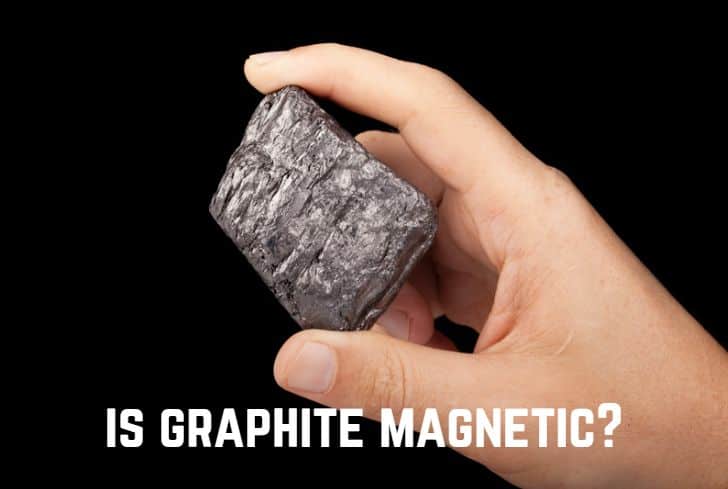Is Pewter Magnetic? (Answered)

Pewter is a metal alloy made up of tin, antimony, copper, bismuth, and occasionally silver. It has been used as early as the Bronze Age to make tableware and continues to help produce decorative items today. Its name “pewter” is most likely a variation of the word “spelter”, an old colloquial term for zinc alloys.
Have you ever wondered if pewter is magnetic? In this article, we are going to discuss just that. We will begin by looking at the properties and uses of pewter. Then we will discuss its relationship with other elements like silver & lead. Finally, we will talk about its value.
Read: Is 14K Gold Magnetic?
Is Pewter Metal Magnetic?
No, Pewter is not magnetic. It is made up of tin, antimony, copper, bismuth, and sometimes silver, all of which are non-magnetic elements. Some pewter also contains lead but that is also non-magnetic. This is because these elements do not have unpaired electrons.
Let us first try to learn what magnetism is. Magnetism is a force caused by the motion of electric charges. Every substance is made up of atoms. These atoms have electrons (particles that carry an electric charge) that circle the atom’s centre, called the nucleus.
In most substances, equal numbers of electrons spin in opposite directions. This cancels out their magnetism, and they are said to be diamagnetic. These include things like paper, cloth, wood, etc.
However, in some substances like iron, the electrons spin in the same direction. This allows their magnetic fields to combine and produces a magnetic field extending beyond the atoms. These objects are strongly magnetic.
The elements constituting pewter—tin, antimony, copper, bismuth, silver, and lead—are all diamagnetic. They do not have unpaired electrons and are not attracted to a magnetic field.
One of the components here, bismuth, was actually what led Anton Brugmans to first discover diamagnetism in 1778.
What is Pewter and What is it Made of?
Pewter is a metal alloy made up of tin, antimony, copper, bismuth, and sometimes silver. In earlier times, lead was also used, although now it is present in only a few lower-grade pewters. Pewter was earlier used extensively for tableware but now is mostly used in decorative objects.
Pewter was widely used in antiquity for making plates, cups, and bowls. Lidless cups and lidded tankards were also made up of pewter. In the 19th century, the mass production of pottery and glassware, along with changes in fashion, led to an almost universal replacement of pewter in tableware.
Pewter is now mainly used for decorative objects such as figurines, models, etc. It is also used in jewellery to imitate platinum.
Older pewter included lead, which made the alloy harder, gave it a darker colour (due to oxidation), and hastened its tarnishing. Pewter with lead is no longer used for anything that comes in human contact as it is poisonous.
There are several types of pewter. The European casting alloy has 94% tin, 1% copper, and 5% antimony, while a casting alloy contains 92% tin, 2% copper, and 6% antimony. Asian pewter (produced in Malaysia, Singapore, and Thailand) contains a higher percentage of tin (about 97.5%), 1% copper, and 1.5% antimony. This makes the alloy a little softer.
There is another material known as “Mexican pewter” that is not pewter. It is an aluminium alloy, usually made by recycling aluminium cans, and it is used to make decorative objects and tableware.
Properties of Pewter
The following are the properties of pewter:
- Composition: Pewter is a metal alloy consisting of 85-99% tin, 5-10% antimony, 2% copper, bismuth, and sometimes silver. Copper and antimony work as hardeners (providing strength to the mix), although some lower grades of pewter may use lead for the same. These hardeners make pewter stronger than pure tin.
- Appearance: Besides providing strength, the hardeners (copper, antimony, and lead) impart a bluish tint to the metal. Polished pewter is bluish-silver, and it resembles platinum. However, pewter quickly oxidizes to form a grey patina (when using alimony) or a nearly black patina (when using lead).
- Melting Point & Hardness: Pewter has a low melting point of 338–446 °F (170–230 °C). This makes it unsuitable for cookware. Moreover, some variants of pewter also contain lead, which is not safe for use with food. Pewter is a soft material, so it can be easily cast, hammered, and engraved.
Uses of Pewter
These are the uses of pewter:
- In ancient times, pewter was the chief material used for making plates, cups, and bowls. The various developments in pottery, glass-making and porcelain in the 18th and 19th centuries led to an almost complete replacement of pewter for making tableware.
- Today pewter is mainly used to create decorative objects such as figurines, statutes, aircraft models, replica coins etc. Certain athletic contests award pewter medals to fourth-place winners.
- Pewter is also used to make pendants. It also acts as platinum imitate in costume jewellery.

How to Tell if Something is Silver or Pewter?
To differentiate between silver and pewter, consider the following points:
- Tarnishing: Silver tarnishes while pewter does not. This can help you distinguish between the two. If you are unsure about a certain metallic item, leave it out for some time and then examine its state. If it is starting to tarnish, then it’s silver.
- Surface Marks: Examine the metal’s surface for indicative marks. Usually, real silver has a “.925” mark, which means that it is real silver. “800” and “900” mean that it is a mix of silver and other elements. Also, pay attention to the surface markings of the metal. If it is very smooth, then it is most likely silver. Otherwise, if it has pock marks and indentations, then it is probably pewter since it dents easily.
- Appearance: Silver is shiny. It is a bright metal with a high lustre. On the other hand, pewter is slightly duller; it has a much darker sheen than silver and looks similar to lead.
- Acid Test: You can use nitric acid to tell between silver and pewter. It is an affordable acid that you can purchase online or from a nearby jewellery store. Clean your metal and put a drop of the acid on it. Make sure you are doing this in a well-ventilated area. If the acid changes color, then it means that the metal is silver; otherwise, it’s pewter.
Read: Is Wood Magnetic?
Is Pewter Toxic?
Yes. Some pewter products contain lead, which is not safe. If it is a product that comes in contact with the human body (such as cups, plates, or jewellery), then it can cause lead poisoning. Modern pewters completely free of lead are also available, but in any case, pewter doesn’t make good tableware.
Acidic food and beverages (fruit juice, tomatoes, wine, etc.) cause heavy leaching of lead from the alloy. Even neutral substances like water can absorb lead. Jewellery containing lead can cause be harmful as some of it may be absorbed by the skin. This is worse for children, who might place jewellery in their mouths.
Even decorative items made out of pewter should not be handled physically. There are lead-free pewter objects, but these contain antimony, whose compounds are toxic, so, they need to be polished. In any case, pewter does not make good tableware/cookware because of its low melting point of 338–446 °F (170–230 °C).
Can Pewter be Recycled?
Yes, pewter is completely recyclable. It is a metal alloy made up of tin and other elements, and it has a classy metallic look. Earlier pewter contained lead, which is harmful to humans, but now there are lead-free variants of pewter that are also good for the environment.
Metal forgers can recycle pewter rather easily. They collect scrap pewter and melt it in a smelting pot. After that, they clean it and pour it into ingots for re-shaping.
Check out this video by ThubPrint to see how pewter can be melted and re-casted at home.
Is Pewter Worth Anything?
Pewter is a metal alloy made up of tin, antimony, copper, bismuth, and occasionally silver. When you sell pewter as scrap, you get roughly 50% of its value. Other than that, there is also a huge market for tableware and decorative items made up of pewter.
Pewter is largely made up of tin, which costs about $7 to $11 per pound. Scrap pewter is generally worth $3 to $5, as you get roughly 50% of the price.
Plus, there is a huge market for pewter products, such as mugs, tankards, candlesticks, etc. You can look it up online and compare your products. Older models of pewter usually command a good price; an antique figurine can be well over a thousand dollars.
The value of the metal will ultimately depend on its condition, age, brand, and other factors.
Read: Does Copper Conduct Electricity?
Conclusion
In this article, we have discussed the magnetic property of pewter. Pewter is made up of tin, antimony, copper, bismuth, and occasionally silver, all of which are non-magnetic elements. Therefore, pewter is also non-magnetic. We looked at the properties and uses of pewter. Then we learnt to differentiate it from silver and finally talked about its value.






